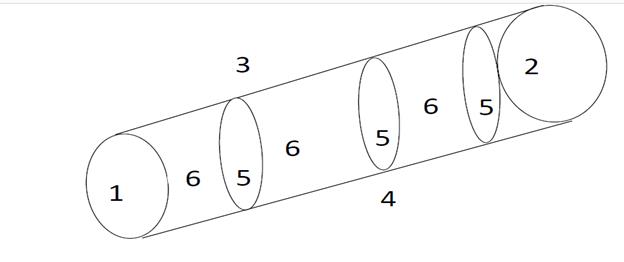GENDER EQUALITY AND SOCIAL INCLUSION (GESI)
VISION SETTING
11.0 VISION SETTING
What is a Vision?
It is an articulation of a desirable future state towards which an individual/ household/ group should aim at that is better and successful than the present situation. It serves as a sign post for household members/group members pointing the way they should go. It is the first step that helps household members to see their dream for a happy future and begin to think about what they want in life as the basis for their first road journey.
Facilitation of the Vision Journey
Members both at household and group are divided into gender categories (Males and females separately to avoid domination of one category) to develop their visions and later consolidate to come up with a consolidated household vision. The process ensures that each household member draws an individual vision journey which should later be consolidated into one household vision journey.
Sketch of the Vision Journey

Step 1: Drawing First circle - Current Situation
Drawing a large circle at the bottom left hand corner of the notebook page or flipchart. This represents the current situation. With the aid of drawings, the participants write or construct the current situation focusing on the assets and property that an individual or household have. This may include the status of a dwelling unit (house), farm enterprises (livestock/ crops/fisheries), household assets, farm equipment, education, food situation, nutrition status and other things that might be available at the homestead.
Step 2: Drawing of the Second Circle - Future and Drafting the road
Drawing a large circle at the top right hand corner of the notebook page or flipchart. With the aid of drawings the participants write or construct individuals’ or households’ desired future situation also focusing on the status of a dwelling unit (house), farm enterprises (livestock/ crops/fisheries), household assets, farm equipment, education, food situation, nutrition status and other things that the individual or household aspire to have.
This represents the future. It is a large circle at the top because it is like a sun and you are reaching for the sky. It is a vision which will inspire households to pick themselves up, and continue to move forward even if they fall and stumble on the rocks along the road.
Draw two straight lines to link both circles.
This represents individuals’ or households’ road from the current (bottom) to the future (top). The road is straight and upwards, because this is how an individual or the household hope to reach up to their vision.
Step 3: Listing Opportunities and Constraints
On the upper side of the road, the participants list opportunities that will help individuals and households to achieve their vision. Opportunities are a set of activities or circumstances that make it possible to achieve your aspirations or needs. The more opportunities individuals can think of, the easier it will be to advance and achieve their goals.
On the lower side of the road, list constraints that can make individuals and households fail or limit them from achieving their vision. It is important to foresee and avoid them if possible.
Note. The opportunities and constraints which are under the individual’s or household’s control should be written near the road. The ones they cannot control should be written further from the road.
Step 4: Developing Milestones and Targets
Individuals and household draw a circle (representing year 1) after the current situation and indicate the milestone (a significant achievement by households or groups as they progress towards their shared vision) that will enable them move towards the vision. In the same way, they draw additional two circles (Representing year 2 and 3) at key points where they expect to have something to show as measurable milestones along the road with the final circle touching the vision circle. Individual and households leaves space in between the milestones where they indicate the actions.
To note: Every journey starts with small steps. The vision is a long term dream. The individuals and households are advised to plan realistically how they are going to move within the existing opportunities and constraints.
Step 5: Developing Proposed Actions/Activities
In between each milestone, the participants indicate the actions or activities needed to move from one milestone to the next. They revise the milestones and targets if necessary. Individual and households can use this vision journey to track their progress over time, and adjust where necessary.
Example of a completed Vision Journey

Step 6: Documentation of milestones and activities for tracking
Each household tracks progress on the implementation of the vision journey on a monthly basis. At the end of the facilitation of the Vision Journey, each household documents milestones and related activities, which will be tracked using the table below:
Household Vision Journey Tracking sheet sample
Household Name: ______ Year: ______ Household Vision:________ Date updated:_________
|
Milestone |
Activities |
Indicator |
Progress in the reporting period |
Comments (Challenges and recommendations) |
|
Procure 15 iron sheets |
Produce 50 bags of soya for sale |
Number of bags sold |
In progress |
3 hectares prepared |
|
Produce irrigated maize for sale |
Number of cobs sold |
Not yet started selling |
Good crop stand |
|
|
Actual buying of the iron sheets |
Number of iron sheets |
5 iron sheets bought |
The remaining 10 will be bought once all the soya bags and irrigated maize are sold |
|
|
Milestone 2 |
Activity 2.1. |
Indicator |
|
|
|
|
Activity 2.2. |
Indicator |
|
|
|
|
Activity 2.3. |
Indicator |
|
|
